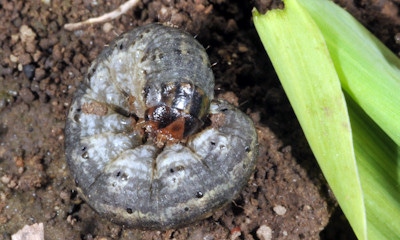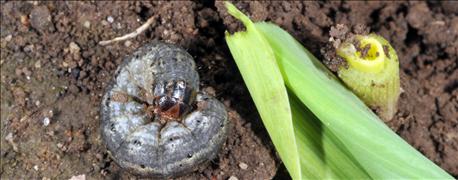
Maybe well under half of the farmers in Indiana are trying cover crops, but many of them are die-hard in their commitment to making it work. If you’re not one of them, and you’re looking for reasons to back your argument, maybe these points will help.
1. You’ve got more topsoil than you know what to do with anyway
Saving soil may not be the sexy reason to grow cover crops but it’s still one of the most important. Spring winds and heavy rains have moved lots of topsoil, especially in fields where the soil was recently disturbed by tillage. If you don’t mind losing soil every spring, then cover crops may not have value for you.

WHO WANTS VISITORS: People may flock to your farm to see cover crops in action if you plant them. If you don’t like crowds, it might be another reason NOT to plant cover crops!

WHO NEEDS COVER CROPS? You do, unless you like soil washing away, as in this shot from a southern Indiana field.
2. You like the challenge of fighting as many weeds as possible
Evidence mounts that cover crops, especially cereal rye, helps suppress marestail in soybeans. Marestail is one of the most persistent weeds that continue to plaque many soybean farmers. Some of the ‘evidence’ may be anecdotal, but Mike Starkey, Brownsburg, doesn’t mind anecdotal evidence if he’s collecting it on his farm!

WHO NEEDS MARESTAIL? Mike Starkey says cover corps can do what herbicides can’t do alone- help bring marestail in soybeans under control.
3. You like compacted soil layers because they help hold up machinery.
Cover crop roots won’t break down compacted layers in one season, but roots penetrating deep layers make a difference over time. Some Kentucky observers insist several years of cover corps can even help break up natural fragipans in southern soils. Whether that’s accurate or not, several report that cover crops do help on compacted layers.

NO MORE LAYERS: Jared Chews, an NRCS specialist in Hendricks County, holds soil that has mellowed from cover crops after only one winter.
4. You don’t like the smell of decaying radishes and turnips!
Radishes and turnips grow in the fall, sending taproots down and penetrating layers. But normally they winterkill, often emitting a gaseous smell when they die. If you and your neighbors can endure it, specialists say it’s well worth it., And this year, these crops didn’t even winterkill in some locations, like this field near Danville.

STILL GROWING: Forage radishes and turnips survived the winter this year in some Indiana locations.
5. Soil that breaks apart easily doesn’t make mud balls easily
If you’ve got six-year olds that love to play in the mud, this might be an issue. Otherwise, most people are happy when water drains through the soil quicker and it dries out more quickly on top. Farmers who have used cover crops for several years insist that water infiltrates their fields and doesn’t pond readily on fields where they have good natural tile drainage, and where they have used cover corps.

WHO NEEDS FINE SOIL AGGREGATES? You do, if you want water to move into the soil and not set on the surface!
About the Author(s)
You May Also Like




